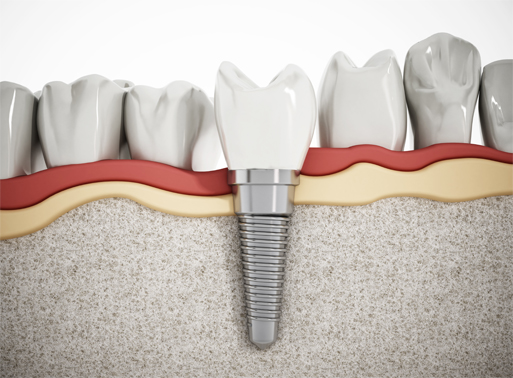Dental instruments play a crucial role in maintaining oral health, particularly during routine cleanings. These specialized tools allow dental professionals to effectively clean teeth, remove plaque and tartar, and ensure the overall health of the gums. Here’s a look at some of the primary instruments used during routine dental cleanings:
Continue reading “An Introduction to Dental Instruments | Fayetteville, GA”The Anatomy of A Tooth | Fayetteville, GA
The anatomy of the human tooth and gums is a fascinating and intricate subject, revealing the complexity behind what we often take for granted in our daily lives. Teeth and gums are essential for chewing, speaking, and overall oral health, each playing a crucial role in the function and maintenance of the mouth.
Continue reading “The Anatomy of A Tooth | Fayetteville, GA”The Role Mouthwash Plays in Oral Hygiene | Fayetteville, GA
Mouthwash may seem like an unnecessary step for one’s oral care routine, and it’s true that in general, you can go without it. Yet, mouthwash could be a great way to gain peace of mind, keep tarter buildup at bay, and make you feel fresh before starting your day.
Continue reading “The Role Mouthwash Plays in Oral Hygiene | Fayetteville, GA”Exploring the Diverse World of Dental Specialties | Fayetteville, GA
Dentistry is a multifaceted field with a range of specialized branches, each focusing on specific aspects of oral health. These dental specialties play a crucial role in ensuring comprehensive care for patients. In this blog post, we’ll delve into some of the prominent dental specialties, shedding light on the unique roles they play in maintaining and improving oral health.
Continue reading “Exploring the Diverse World of Dental Specialties | Fayetteville, GA”Adult Tooth Loss: Causes, Consequences, and Replacement Options | Fayetteville, GA
Adult tooth loss is a multifaceted issue with implications for oral health and overall well-being. Understanding the causes and consequences is crucial for making informed decisions about replacement options. Whether opting for dental implants, bridges, or dentures, consulting with a qualified dental professional is essential for personalized and effective treatment. With advancements in modern dentistry, individuals facing adult tooth loss can regain not only their smiles but also their oral health and confidence.
Continue reading “Adult Tooth Loss: Causes, Consequences, and Replacement Options | Fayetteville, GA”The Art and Science of Cosmetic Dentistry | Fayetteville, GA
Your smile is often the first thing people notice about you, and it plays a crucial role in making a positive impression. Cosmetic dentistry focuses on improving the appearance of your teeth, helping you achieve a smile that reflects your personality and radiates confidence. Whether you’re dealing with stained teeth, misalignments, or gaps, there’s a cosmetic dentistry solution tailored to address your specific needs.
Continue reading “The Art and Science of Cosmetic Dentistry | Fayetteville, GA”What To Know About Using Charcoal for Oral Care | Fayetteville, GA
In recent years, charcoal has gained popularity as a trendy ingredient in oral care products, promising a natural and effective solution for achieving a brighter, whiter smile. From charcoal toothpaste to charcoal-infused toothbrushes, the market is flooded with these products. However, before jumping on the charcoal bandwagon, it’s crucial to understand the pros and cons associated with using charcoal for oral care.
Continue reading “What To Know About Using Charcoal for Oral Care | Fayetteville, GA”Unpacking Cold Sores: Causes, Treatment, and Prevention | Fayetteville, GA
Cold sores, also known as fever blisters, are a common viral infection caused by the herpes simplex virus (HSV). These small, fluid-filled blisters can appear on or around the lips, causing discomfort and self-consciousness. In this blog post, we will delve into the causes, treatment options, and preventive measures for managing cold sores.
Continue reading “Unpacking Cold Sores: Causes, Treatment, and Prevention | Fayetteville, GA”Understanding Dental Insurance | Fayetteville, GA
Maintaining optimal oral health is crucial for overall well-being, and dental insurance plays a pivotal role in ensuring access to quality dental care. In this comprehensive guide, we will explore the intricacies of dental insurance, empowering you with knowledge to make informed decisions about your oral health coverage.
Continue reading “Understanding Dental Insurance | Fayetteville, GA”The Tell-Tale Signs of an Oral Infection | Fayetteville, GA
Our oral health is a crucial aspect of our overall well-being, and paying attention to the signs of potential issues is essential. One common concern that often goes unnoticed is oral infections. In this blog post, we will explore the various signs that may indicate the presence of an oral infection and why it’s vital to address these issues promptly.
Continue reading “The Tell-Tale Signs of an Oral Infection | Fayetteville, GA”





